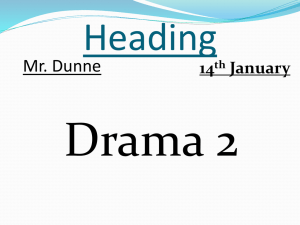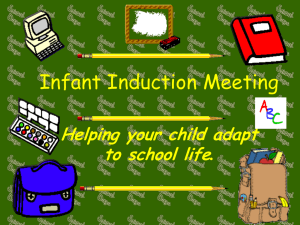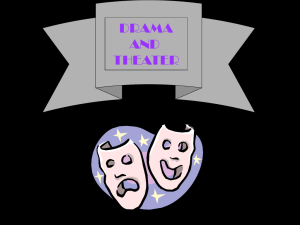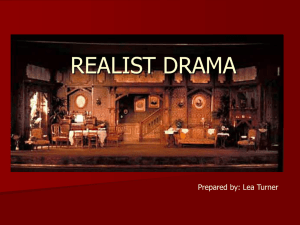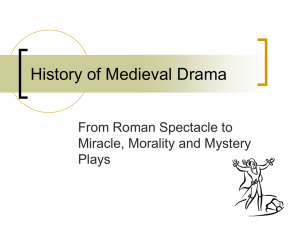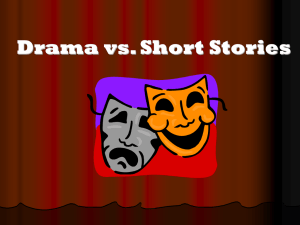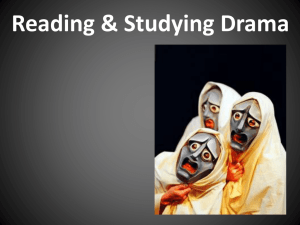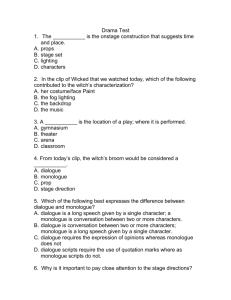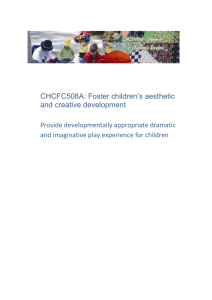Elements of Drama
advertisement
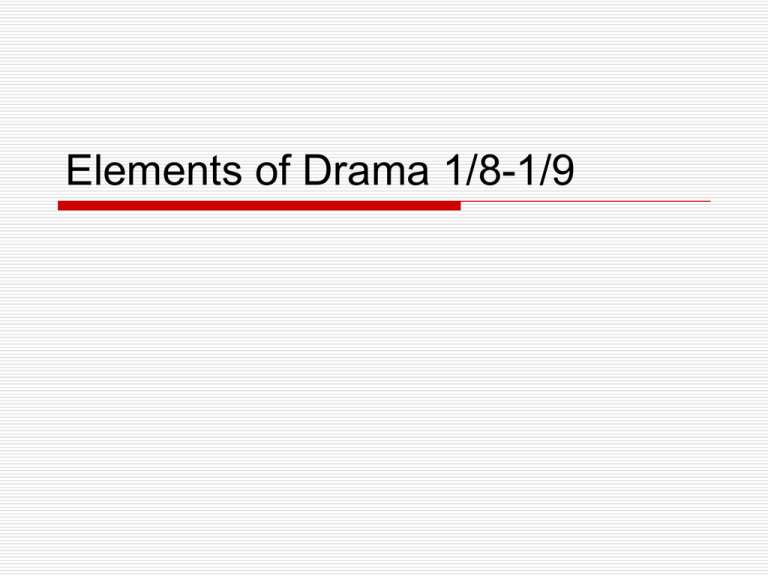
Elements of Drama 1/8-1/9 Directions On page 1R copy everything that is highlighted in red/blue (if it is inside a red/blue box then copy it!) While drama is similar to typical fiction, it isn’t quite the same. Some dramatic elements are: shared with fiction unique to drama While drama is similar to typical fiction, it isn’t quite the same. Some dramatic elements are: shared with fiction unique to drama In some ways, drama is very similar to fiction. Characters Climax Conflict Resolution Plot Dialogue While drama is similar to typical fiction, it isn’t quite the same. Some dramatic elements are: shared with fiction unique to drama Several elements are unique to drama - we’ll start with divisions. Acts Each play has one or more acts - think of them as parts or sections. Scenes Each act has several scenes - think of them as chapters. Several elements are unique to drama - including the script. Dialogue The words characters say Stage Directions Notes telling how the work is to be performed or staged - they are often printed in italics and set off in brackets. In addition to regular dialogue, drama features dramatic speech - use at least one of these in your scene! Monologue A character speaks at length to silent listeners Soliloquy A character alone on stage reveals private thoughts (talks to himself) Aside A character briefly addresses the audience - the other characters on stage don’t hear. Example Clips http://www.youtube.com/watch?v=YgTssbf Ju3Y (wolfpack speech, The Hangover) Example: Monologue http://www.youtube.com/watch?v=46Y1ww 57r4Y (Aside-Ferris Bueller’s Day Off) Several elements are unique to drama - some involve objects. Sets The constructions indicating where a scene takes place sets may include painted backdrops, etc. Props Moveable objects that actors use onstage - anything that they carry! Identify all props/what the set looks like! http://www.youtube.com/watch?v=_6b2Xh XkPpg What kind of mood/tone is created? How does the director/set designer create these? How does the dialogue influence the mood? Based on the clip, what do you think the theme of the piece may be? How does the set design help establish theme? All these dramatic elements combine to create a dramatic effect and to convey a theme. Acts Scenes Script Dramatic effect Dialogue Stage directions Sets Props Theme Your Turn: Drama Unit Project Due: 2/11-2/15 You will break into groups of no more than 5 people. Each group must choose: actors, a playwright, a director, a set designer, and a narrator (some groups may have people with many roles) Part 1: You will be assigned two chapters. You must read your chapters and produce an analysis (I will give further instructions) Project Cont’d Part 2: You will be responsible for adapting (turning) the chapters into a play. The playwright will complete the script (with all stage directions) with the help of the “cast”. You will create a set design and eventually perform your play to the class for a grade. The play must include all important events from your chapter (no made up/fictional information: PLEASE STICK TO THE STORY!) Roles Director- You will be responsible for making sure the actors know how to say their lines as well as where to move/go and when. It is up to you to create your vision of the play. Actors- You are the ones on the “stage”. You must become your character and create a one page detailed character analysis. Cont’d Playwright- You are the person responsible for taking the information in the chapters and creating a script with dialogue and stage directions. You are writing the show! Set Designer/Costumes- You are responsible for designing both the costumes and set. How will you create your vision. You must complete drawings of both the set and costumes.


